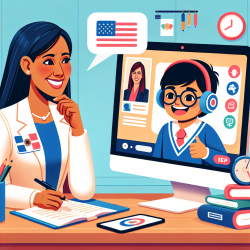Introduction
In the field of speech-language pathology, the protection of patient privacy is paramount. The recent study titled "Improved de-identification of physician notes through integrative modeling of both public and private medical text" offers significant insights into enhancing the de-identification process of medical records. This blog explores how practitioners can leverage these findings to improve their skills and ensure better outcomes for their clients.
Understanding De-identification
De-identification is the process of removing or obscuring personal identifiers from medical records to protect patient privacy. This study proposes an innovative method that uses both public and private medical texts to improve the accuracy of de-identification.
Key Findings
The study's model successfully recalled 98% of Protected Health Information (PHI) tokens from 220 discharge summaries. This high recall rate indicates that the model is highly effective in identifying and removing PHI while maintaining the utility of the data for research purposes.
- The model uses distributional differences between public and private medical texts to accurately classify PHI.
- It leverages natural language processing techniques to identify non-PHI words, which are more likely to appear in public medical texts.
- The model's performance exceeds the criteria established by four Institutional Review Boards, making it a reliable tool for de-identification.
Implications for Practitioners
Practitioners in speech-language pathology can benefit from integrating these findings into their practice. By adopting automated de-identification methods, practitioners can:
- Ensure the confidentiality of patient records, which is crucial for maintaining trust and compliance with legal requirements.
- Facilitate the sharing of de-identified data for research, leading to advancements in treatment methods and outcomes.
- Reduce the time and resources spent on manual de-identification, allowing more focus on patient care.
Encouraging Further Research
The study highlights the potential of using public medical texts to improve de-identification processes. Practitioners are encouraged to explore further research in this area to enhance their understanding and application of these techniques. By staying informed about the latest developments, practitioners can continue to improve their practice and contribute to the advancement of the field.
Conclusion
The integration of advanced de-identification techniques into speech-language pathology practice can significantly enhance patient privacy and research capabilities. Practitioners are encouraged to adopt these methods and engage in further research to stay at the forefront of the field.
To read the original research paper, please follow this link: Improved de-identification of physician notes through integrative modeling of both public and private medical text.










